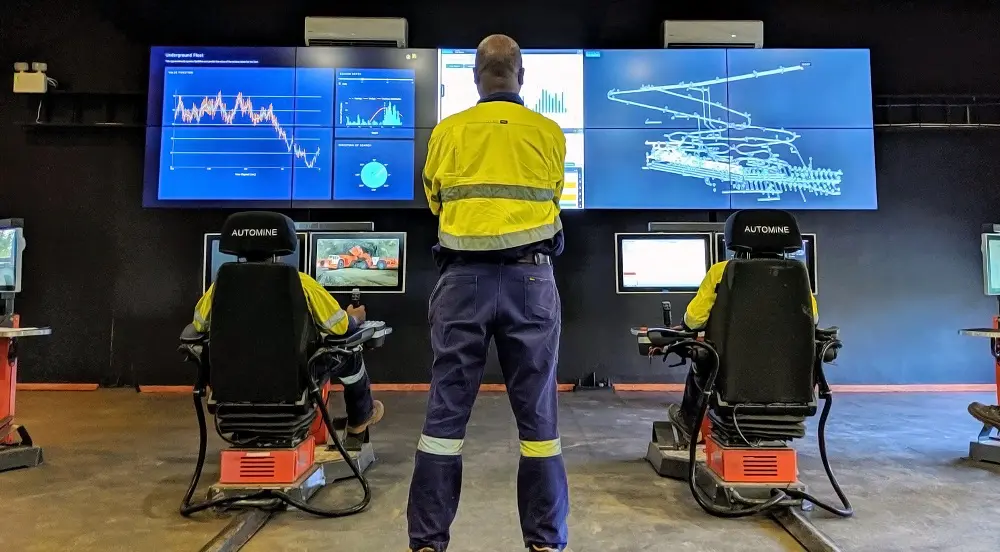Mining technology has undergone significant transformations over the years, reshaping the way minerals and resources are extracted from the earth. As global demand for minerals increases, the industry faces the dual challenges of maximizing efficiency while minimizing environmental impact. This article explores the latest advancements in mining technology, their applications, and the future of the industry.
The Evolution of Mining Technology
Historically, mining has evolved from manual labor and rudimentary tools to sophisticated machinery and automated processes. Early mining techniques relied on simple tools like picks and shovels, whereas modern methods incorporate advanced technologies that enhance productivity and safety.
Key Advancements in Mining Technology
- Automation and Robotics: The introduction of automated machinery has transformed mining operations. Autonomous vehicles and drones are now used for tasks such as ore transportation and site surveying. These technologies increase efficiency, reduce labor costs, and enhance safety by minimizing human exposure to hazardous environments.
- Data Analytics and AI: The use of data analytics and artificial intelligence (AI) has revolutionized decision-making in mining. By analyzing geological data, companies can identify optimal drilling locations and predict resource availability. AI algorithms also facilitate predictive maintenance, reducing equipment downtime and maintenance costs.
- Remote Sensing: Remote sensing technologies, including satellite imagery and aerial drones, allow for the collection of vast amounts of geological and environmental data. This technology aids in exploration, enabling geologists to assess mineral deposits without extensive physical surveys.
- Advanced Drilling Techniques: Innovations in drilling technology, such as directional drilling and hydraulic fracturing, have improved resource extraction efficiency. These techniques allow miners to access deposits that were previously unreachable and enhance overall yield.
- Mineral Processing Innovations: The processing of mined materials has also seen advancements. Technologies like flotation, magnetic separation, and hydrometallurgy are improving recovery rates and reducing waste. These methods are more environmentally friendly and economically viable.
- Sustainable Practices: Emerging technologies are focusing on sustainability within the mining sector. Processes such as bioleaching and the use of biodegradable agents for mineral extraction minimize environmental impact and promote more responsible mining practices.
- Virtual and Augmented Reality (VR/AR): VR and AR technologies are being employed for training and operational planning. These immersive tools help workers understand complex systems and simulate real-world mining scenarios, improving safety and operational efficiency.
Benefits of Mining Technology
The integration of advanced technologies in mining operations offers numerous benefits:
- Increased Efficiency: Automated and data-driven processes streamline operations, leading to higher productivity and reduced costs.
- Enhanced Safety: Technologies that minimize human exposure to hazardous environments significantly reduce workplace accidents and injuries.
- Environmental Sustainability: Innovative practices lead to more responsible resource extraction, helping to mitigate the environmental impacts traditionally associated with mining.
- Improved Resource Recovery: Advanced processing techniques allow for greater yields from existing deposits, reducing the need for new mining operations.
Challenges and Considerations
Despite the advantages of mining technology, the industry faces several challenges:
- High Initial Costs: The adoption of advanced technologies often requires substantial upfront investment, which can be a barrier for smaller mining companies.
- Skills Gap: The transition to more technologically advanced operations necessitates a workforce skilled in new technologies. Addressing this skills gap through training and education is essential.
- Regulatory Hurdles: Navigating the complex regulatory landscape surrounding mining operations can slow the implementation of new technologies.
- Environmental Concerns: While many technologies promote sustainability, the extraction process still poses risks to ecosystems, necessitating careful management and monitoring.
The Future of Mining Technology
The future of mining technology is poised for further innovation, driven by ongoing advancements in several key areas:
- Artificial Intelligence: AI will continue to play a significant role in optimizing mining operations, enhancing predictive maintenance, and improving safety measures.
- Sustainability: As the demand for responsible mining practices grows, technologies that promote sustainability will become increasingly important. This includes the development of closed-loop systems and increased recycling efforts.
- Decarbonization: The mining industry is exploring ways to reduce its carbon footprint through the use of renewable energy sources and electric machinery.
- Collaborative Technologies: Innovations that enhance collaboration between different stakeholders—such as mining companies, governments, and local communities—will be crucial for addressing social and environmental concerns.
Conclusion
Mining technology is at the forefront of transforming the resource extraction industry. By embracing automation, data analytics, and sustainable practices, the mining sector can enhance efficiency, safety, and environmental stewardship. As challenges persist, the continued evolution of mining technology will be essential in ensuring that the industry meets the growing global demand for minerals while protecting the planet for future generations. Through innovation and responsible practices, mining can pave the way for a more sustainable future.



